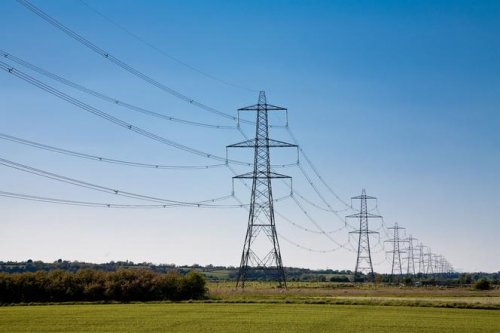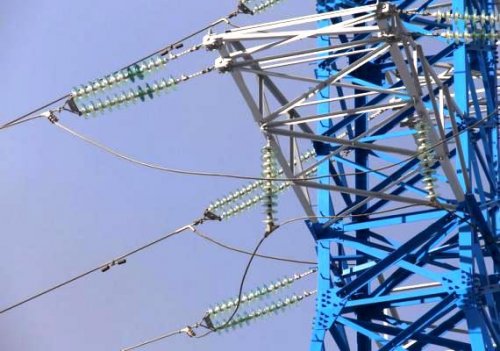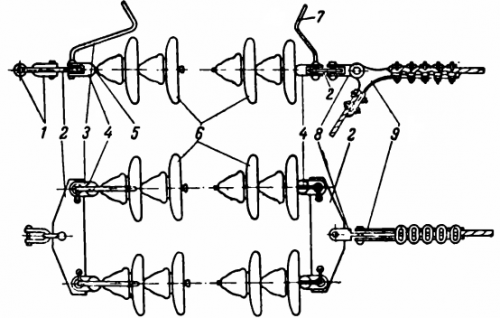Blind, release, slide and pull clamps for attaching wires to supports
Attaching wires to suspension insulators and the latter to supports, as well as connecting wires to each other, are carried out using linear reinforcement… One of the important elements of linear fittings is clamps for fixing wires.
Brackets on intermediate supports
Figure 1 shows a suspended string of insulators attached with its top to the intermediate support beam. A hook is fixed on the support crossbar, on which the entire garland is suspended with the help of an earring inserted into the cap of the upper insulator. The conductor is placed in a supporting bracket, which is connected to the lower insulator by means of an opening (suspension).
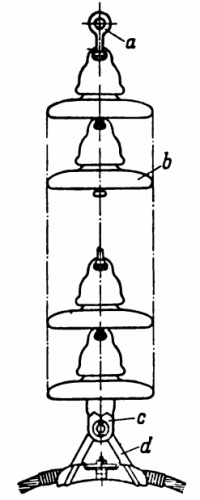
Rice. 1. Hanging string of insulators: b — hanging insulator, e — supporting bracket, ° C — opening (suspension)
Clamps of three types are used on intermediate supports to fasten the wires: deaf, releasing and sliding.
Blind bracket (Fig. 2) is called a clamp in which the wire is fixed so tightly that it cannot slide into the clamp when it is stretched on one side.The conductor is laid in the body of the clamp 1, hingedly attached to the suspension 2 and held in the clamp using a die 4 and special nuts 3.
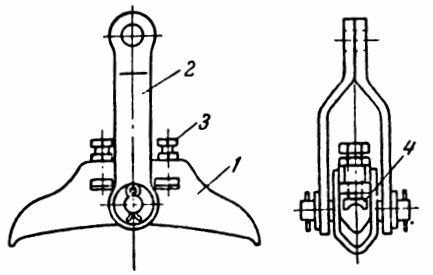
Rice. 2. Supporting blind bracket
A release clamp (Fig. 3.) is a clamp that releases the wire from the clamped state when the single-sided tension of the wire exceeds a certain set value. The consequence of this is a reduction in the effort on the intermediate supports.
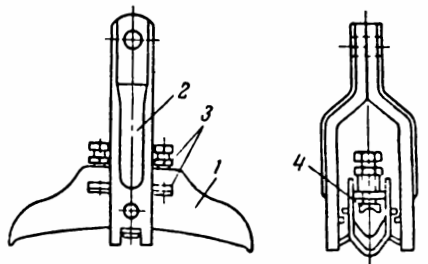
Rice. 3. Support release bracket
Release clamps works as follows. In the normal mode of operation of the line, that is, when with the same voltage on the wires in adjacent sections, the strings of the insulators are located vertically, the wire is held in the bracket using a matrix 4 and special nuts 3.
In line emergency mode, i.e. when the one-sided tension on the wire forces a string of insulators to deviate from the vertical position, the body 1 with the wire caught in it falls from the suspension 2.
Sliding clamp (Fig. 4) is called a clamp, in which the wire is not fixed in any way and is prevented from jumping up by pins 1, which serve to fasten the horns, which protect the insulating ring from the action of an electric arc that occurs between a wire and traverse when overlapping due to surges.
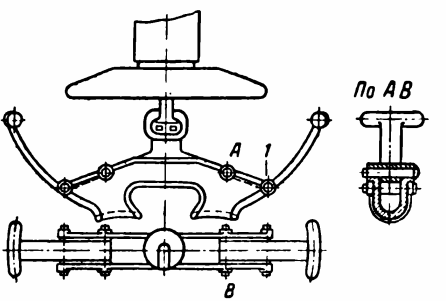
Clamps on anchor supports
On the anchor supports, the wires are tightly fixed with the help of special ones tension clamps.
In fig. 5 shows a string of bolt tension clamp insulators for steel-aluminum conductors. The garland hangs almost horizontally. The wire branching off at the clamp goes into a free-hanging jumper under the garlands.

Rice. 5.Clamping string insulators with bolt tightening clamp
In fig. 6 shows a double tension series of insulators used on anchors when crossing railroads, rivers, ravines, etc. There are other types of clamps: wedge tension clamp for copper wires, depression clamp, etc.
Rice. 6. Double tensile strain insulators: 1 — clamps; 2 — rocking arms; 3 — upper horns; 4 — two-legged ears; 5 — pistils; 6 — insulators; 7 — lower horns; 8 — intermediate link; 9 — tension clamp.

